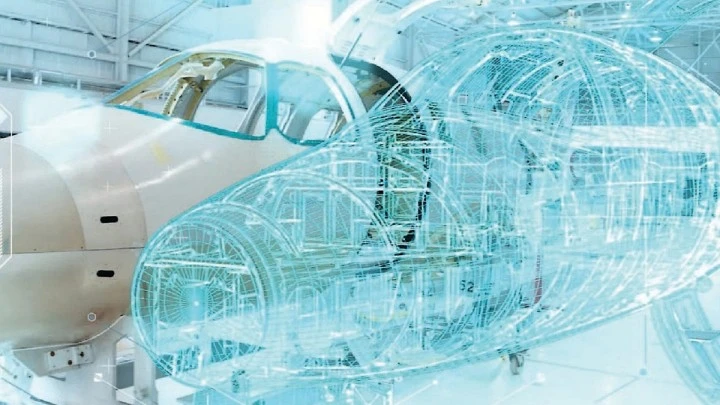
Aerospace Systems
Overview
The BEng (Hons) Aerospace Systems teach students with a deep understanding to help planes and spaceships fly better. In this programme, students will learn about aerospace technologies, systems engineering, and flight dynamics to ensure everything from operation to performance of spaceships works smoothly and safely.
This course also combines hands-on lab experience and industry collaborations to meet the growing demand for skilled aerospace engineers.
Objectives
- Design, test, and manage aerospace systems.
- Develop critical thinking and problem-solving skills.
- Foster innovation through research and technical expertise.
- Prepare graduates for leadership roles.
Prerequisites
- Strong background in mathematics, physics, and engineering concepts.
- Interest in aviation and aircraft technology.
- Passion for aerospace and engineering design.
- Commitment to lifelong learning and personal development.
- Strong communication and interpersonal skills.
- Desire for positive impact.
Curriculum Outline
- Aerospace engineering 1
- Analogue electronics 1
- Engineering skills 1
- Materials 1
- Dynamics 1
- Engineering mathematics 1
- Microelectronic systems 1
- Statics 1
- Thermodynamics 1
- Aerospace design project 2
- Embedded processors 2
- Engineering electromagnetics 2
- Introduction to aerodynamics 2
- Mathematics ae2x
- Thermodynamics 2
- Engineering skills 2
- Introductory programming 2
- Dynamics 2
- Fluid mechanics 2
- Engineering mathematics 2
- Advanced programming & software engineering 3
- Aerospace team design project 3
- Communication systems 3
- Control 3
- Electromagnetic compatibility 3
- Instrumentation and data systems 3
- Simulation of engineering systems 3
- Dynamics 3
- Propulsion & turbomachinery 3
- Real-time computer systems 3
- Aircraft performance 3
- Flight mechanics 3
- Aerospace systems design project 4
- Control 4
- Individual project 4
- Elements of law for engineers 1
- Advanced control 5
- Aircraft handling qualities and control 5
- Individual project 5
- Elements of law for engineers 1
Teaching Method
- Lectures
- Tutorials
- Field trips
- In-class quizzes
- Independent study
- Group work
- Supervision
- Workshops
- Laboratory work
- Practical sessions
Modules
- Aircraft Performance and Operations
- Flight Dynamics
- Aerospace Propulsion Systems
- Embedded Control Systems
- Aircraft Systems and Avionics
- Airframe Systems
- Aerospace System Design
- Automatic Flight Control Systems
- Fundamentals of Engineering Mechanics
- Introduction to Electrical Engineering
- Digital and Computer Electronics 1
- Electrical and Electronic Circuits
- Introduction to Procedural Programming
- Introduction to Professional Engineering
- Engineering Fluid Mechanics
- Modelling and Control
- Sustainable Engineering Practice
- Engineering Work Integrated Learning
- Managing Engineering Projects
- Engineering Final Year Project A
- Engineering Final Year Project B
- Mathematics for Engineering, Science and Technology 1
- Mathematics for Engineering, Science and Technology 2
- Calculus of Science and Engineering
- Embedded Systems Engineering
- Mechatronics Design 1
- Introduction to Mechanical Engineering Design
- Engineering Materials 1
- Dynamics of Machines
- Mechanics of Solids 1
Assessment Methods
- Individual work
- Laboratory work
- Group project work
- Coursework
- Teamworking
- Presentations
- Design projects
- Technical assignments
Course Duration
This programme may vary depending on the institutions and countries, but the general standard options in the UK are:
- 04 years full-time.
- Part-time options available.
Facilities
- Wind tunnels
- Flight simulators
- Aircraft hangars
- Materials testing laboratories
- Computer-aided design (CAD)
- Computational fluid dynamics (CFD) tools
- Machining, fabrication, and assembly workshops
- Research centres
Career Pathways
- Aircraft Design Engineer
- Aerospace Systems Engineer
- Structural Engineer
- Avionics Engineer
- Propulsion Engineer
- Space Systems Engineer
- Defence Industry
- Automotive Industry
- Research and Development
- Consulting
- Senior leaders
Fees and Fundings
- Tuition fees are £31,800 (per year) and may vary depending on the institution.
- Scholarships, grants, and financial opportunities are available.
- Government loan aid is available.
Entry Requirements
- HSC minimum 75% or 4.0 / 5.0 of total GPA.
- International Baccalaureate (IB) Diploma: 28 points overall.
- Successful completion of IFY from a UK institution.
- A-Level requirements are outlined on the course page.
- English language requirements (IELTS or TOEFL).
- Strong communication and interpersonal skills.
Field Work and Internships
- Opportunities for industry placements and internships with aerospace companies.
- Fieldwork to understand the practical applications of aerospace systems.
Certifications
- Professional Engineer (PE)
- Chartered Engineer (CEng)
- Chartered Professional Engineer (CPE)
- Aircraft Maintenance Technician (AMT)
- Flight Test Engineer
Intakes
Typically, it takes twice a year (fall and spring), but may vary like:
- Fall (September/October)
- Spring (January/February)
- Summer (May/June)
Student Testimony
"Studying aerospace engineering opens up a number of opportunities and gives you the ability to choose an industry you’re passionate about." Says - "Hannah Clague, Aerospace BEng (Hons)".
Frequently asked questions
The programme covers a wide range of topics, including aircraft design, propulsion systems, flight dynamics, aerodynamics, materials science, and aerospace structures.

